Informatica Audio Book - 42 Minutes
vBook version below
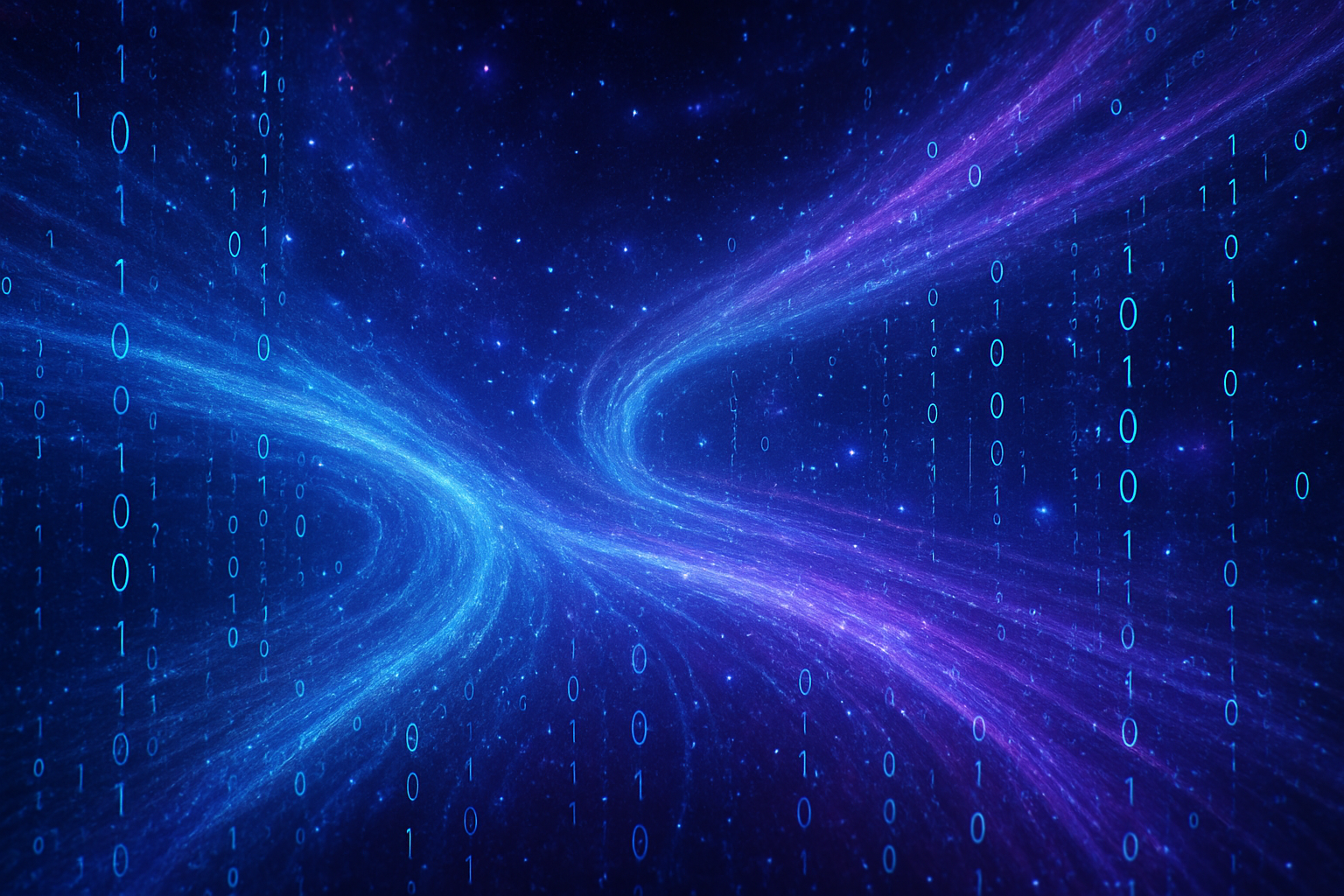
Chapter 1: Welcome to the Information Universe
The fundamental nature of reality as information
Welcome to the Information Universe where the fabric of reality is woven from the threads of information. As you embark on this journey, it\\'s crucial to grasp the significance of understanding information in its various forms and manifestations. Information is not merely a collection of data or facts; it is the very essence that shapes our perception of the world and influences every aspect of our lives.
From the simplest interactions to the most complex systems, information orchestrates the symphony of our reality. It\\'s like a secret code that unlocks the mysteries of existence, revealing the interconnectedness of all things. Understanding information empowers us to navigate through the labyrinth of life with clarity and purpose.
The Fabric of Reality
By delving into the depths of the Information Universe, we can unravel the enigma of our existence and find meaning in our experiences. Every thought, every emotion, every sensation is encoded with information, contributing to the intricate tapestry of our lives. The more we comprehend the nature of information, the more we can appreciate the subtle nuances that define our reality.
It\\'s as if we are given a pair of glasses that allow us to perceive the world in its true form, transcending the illusions that often cloud our vision. Through this understanding, we can harness the power of information to shape our destiny and create the life we envision.
The Journey Ahead
The Information Universe beckons with infinite possibilities, urging us to explore its boundless horizons. Join me as we embark on this exhilarating expedition, unraveling the secrets of the Information Universe and discovering the profound impact of information on our everyday experiences.
In this chapter, we establish the foundational understanding that everything we perceive, from the smallest quantum particles to the largest cosmic structures, is fundamentally information in various states of organization and flow. This perspective shift opens up entirely new ways of understanding consciousness, reality, and our place within the cosmic matrix.
Information as the Universal Language
Consider how information manifests at every level of existence. At the quantum level, particles exist in states of probability until observed, suggesting that information about their state is more fundamental than the particles themselves. In biological systems, DNA carries the information blueprint for life, while neural networks process information to create consciousness.
Even in our daily lives, we are constantly swimming in an ocean of information - from the sensory data our brains process to the digital communications that connect us globally. This chapter invites you to see beyond the surface appearances and recognize the informational substrate that underlies all phenomena.
The Paradigm Shift
This new way of seeing requires a fundamental shift in perspective. Instead of viewing the world as composed of separate objects and forces, we begin to see it as an interconnected web of information flows and patterns. This shift has profound implications for how we understand causality, consciousness, and the nature of reality itself.
As we progress through this book, we\\'ll explore how this informational view of reality can transform not just our understanding, but our actual experience of life. We\\'ll discover practical ways to work with information flows to enhance our consciousness, improve our decision-making, and align ourselves more harmoniously with the deeper patterns of existence.
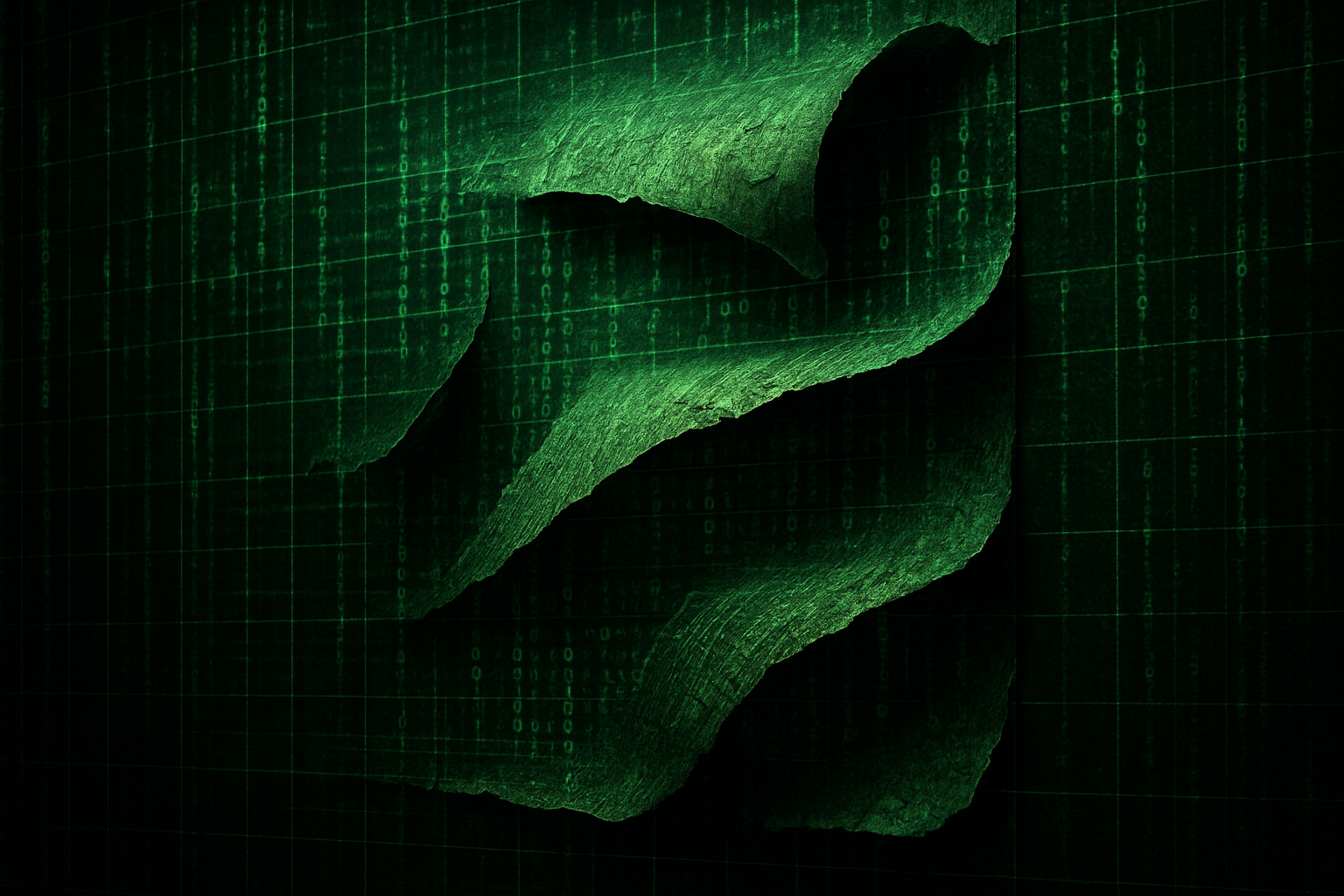
Chapter 2: Unveiling the Matrix - What is Informatica?
A paradigm shift in perceiving reality
Informatica is not just a term; it\\'s a paradigm shift, a new way of perceiving reality. It delves into the heart of existence and unravels the intricate web of information that underlies everything we experience. At its core, Informatica challenges us to question our fundamental understanding of the world, urging us to peel back the layers of illusion and see the underlying fabric of existence.
The Essence of Informatica
In essence, Informatica is an invitation to explore the very building blocks of reality. Imagine peering through a multifaceted prism, seeing the world not as a collection of disparate objects but as a seamless tapestry of interconnected data. This is the essence of Informatica - it opens our eyes to the rich tapestry of interwoven information that shapes every aspect of our lives.
When we embrace Informatica, we open the door to a world where everything is essentially information, where the boundaries between the physical and the abstract blur, and where meaning emerges from the dance of data. The journey into Informatica demands an open mind and a willingness to challenge conventional wisdom.
Breaking Through Conventional Understanding
It beckons us to confront the limitations of our current understanding and to venture into uncharted territory. Through this exploration, we begin to understand that the matrix we\\'re diving into is not a static construct, but a dynamic, ever-evolving network of information that is both shaped by and shapes our experiences.
In unveiling the matrix through Informatica, we gain a fresh perspective on our place in the cosmos and the nature of reality itself. By shedding light on the underlying fabric of existence, we come to recognize the profound implications of our interconnectedness and the potential for harnessing the power of information to transform our lives and our world.
The Information Matrix
The concept of the matrix in Informatica goes far beyond the popular science fiction metaphor. It represents the fundamental information structure that underlies all of reality. This matrix is not a simulation or illusion, but rather the most basic level of existence - the informational substrate from which all phenomena emerge.
Think of it as the source code of reality itself. Just as computer programs are built from lines of code that create complex behaviors and interfaces, our reality emerges from patterns of information that create the rich, complex world we experience. Understanding this matrix allows us to work with reality at its most fundamental level.
Practical Applications
Informatica is not merely a philosophical concept but a practical framework for understanding and interacting with the world. When we recognize that everything is information, we can begin to:
- Understand how our thoughts and beliefs literally shape our reality
- Recognize patterns in our lives that were previously invisible
- Develop more effective ways of processing and integrating new information
- Create more harmonious relationships by understanding the information exchanges between people
- Make better decisions by seeing the informational patterns that influence outcomes
The Transformation Process
Adopting the Informatica perspective is itself an informational transformation. As we begin to see reality through this lens, our neural networks literally rewire themselves to process information in new ways. This creates a feedback loop where our enhanced understanding allows us to perceive even more subtle informational patterns, leading to deeper insights and greater mastery.
This transformation is not just intellectual but experiential. As we practice seeing the world as information, we begin to feel our connection to the larger informational matrix. We start to sense the flows of information around us and learn to navigate them more skillfully.
The Journey Forward
As we continue our exploration of Informatica, we\\'ll discover that this perspective offers not just a new way of understanding reality, but a new way of living within it. We\\'ll learn to read the informational patterns that surround us, to influence these patterns consciously, and to align ourselves with the deeper currents of information that flow through the universe.
This is the promise of Informatica - not just knowledge, but transformation. Not just understanding, but mastery. Not just seeing the matrix, but learning to dance within it.
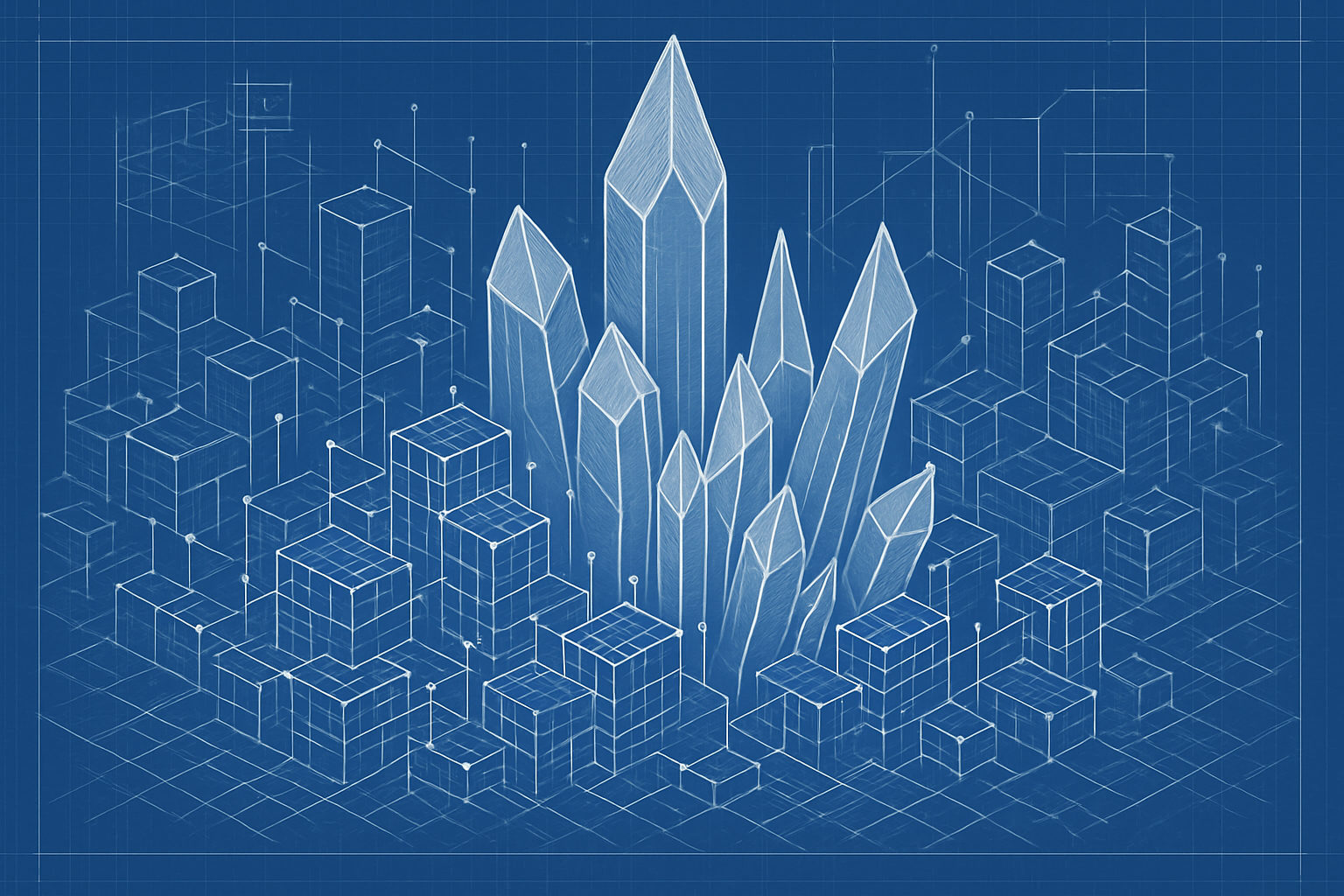
Chapter 3: The Architecture of Reality
How information forms the building blocks of existence
Reality has an architecture, and that architecture is built from information. Just as a building requires a blueprint, materials, and construction principles, the universe operates according to informational blueprints, data structures, and processing principles that create the rich, complex reality we experience.
The Informational Blueprint
At the most fundamental level, reality operates like a vast information processing system. The laws of physics can be understood as algorithms that process information about the state of the universe, determining how energy and matter behave. Quantum mechanics reveals that at the smallest scales, reality exists in states of pure information until observation collapses these possibilities into definite outcomes.
This suggests that information is not just a description of reality - it is reality. The distinction between the map and the territory dissolves when we realize that the territory itself is made of the same stuff as the map: information.
Hierarchical Information Structures
Reality is organized in hierarchical layers of information processing, each building upon the layers below:
Quantum Level: At the foundation, quantum fields process information about particle states, interactions, and probabilities. The uncertainty principle itself can be understood as a fundamental limit on how much information can be simultaneously specified about a quantum system.
Atomic Level: Atoms are stable information structures that emerge from quantum interactions. The periodic table represents different stable configurations of informational relationships between protons, neutrons, and electrons.
Molecular Level: Molecules are more complex information structures that emerge when atoms share information through chemical bonds. The properties of molecules arise from the informational patterns of their constituent atoms.
Biological Level: Living systems are sophisticated information processing networks. DNA stores information, proteins process it, and cellular networks communicate it. Life itself can be understood as information that has learned to replicate and evolve.
Consciousness Level: Consciousness represents information that has become aware of itself. Neural networks process information about both the external world and their own internal states, creating the recursive loops that generate self-awareness.
Information as Structure and Process
One of the key insights of Informatica is that information is both structure and process. It\\'s not just static data but dynamic patterns that flow, transform, and evolve. Reality is not a collection of things but a network of informational relationships and processes.
Consider a simple example: a wave in the ocean. The wave is not made of any particular water molecules - the molecules simply move up and down as the wave passes through. The wave is pure pattern, pure information about the movement of energy through the medium of water. Similarly, all phenomena in reality can be understood as informational patterns moving through various media.
The Emergence Principle
Complex informational structures emerge from simpler ones through the principle of emergence. When simple information processing units interact according to basic rules, complex behaviors and structures can spontaneously arise that were not explicitly programmed into the system.
This is how consciousness emerges from neural networks, how life emerges from chemistry, and how chemistry emerges from physics. Each level of organization represents a new type of information processing that builds upon but transcends the levels below it.
Information Conservation and Transformation
Just as energy cannot be created or destroyed but only transformed, information follows similar conservation principles. Information can be:
- Copied: The same informational pattern can exist in multiple locations
- Transformed: Information can change form while preserving its essential structure
- Combined: Different information streams can merge to create new patterns
- Compressed: Complex information can be encoded in simpler forms
- Expanded: Simple information can unfold into complex structures
Understanding these principles allows us to work more effectively with the informational architecture of reality.
Practical Implications
Recognizing reality\\'s informational architecture has profound practical implications:
Personal Development: We can understand our habits, beliefs, and behaviors as informational patterns that can be consciously modified through new information inputs and processing strategies.
Relationships: Human relationships are complex information exchange systems. Understanding the informational dynamics can help us communicate more effectively and create more harmonious connections.
Problem Solving: Every problem is essentially an informational challenge - we need the right information, processed in the right way, to find solutions.
Creativity: Creativity involves combining existing informational patterns in new ways to generate novel solutions and expressions.
The Living Architecture
Perhaps most remarkably, reality\\'s informational architecture is not static but alive and evolving. The universe is constantly processing new information, creating new patterns, and exploring new possibilities. We are not just observers of this process but active participants in it.
Every choice we make, every thought we think, every action we take adds new information to the cosmic matrix and influences the ongoing evolution of reality\\'s architecture. This gives us both tremendous responsibility and tremendous opportunity to participate consciously in the universe\\'s creative process.
As we continue our journey through Informatica, we\\'ll explore how to read this architecture more clearly, how to work with its principles more effectively, and how to contribute more consciously to its ongoing evolution.

Chapter 4: Patterns in the Cosmic Code
Understanding universal patterns in information processing
Have you ever looked at the world around you and noticed the intricate patterns that seem to emerge from the chaos? From the delicate symmetry of a snowflake to the rhythmic dance of ocean waves, patterns are everywhere. It\\'s as if the universe itself is an artist, painting a masterpiece with the brushstrokes of repeating forms and structures.
The Language of Patterns
But what do these patterns mean? Are they simply random occurrences, or do they hold a deeper significance? Let\\'s embark on a journey to explore the fascinating concept of patterns in our reality. When we start to pay attention, we realize that patterns are not just limited to the natural world. They also manifest in human behavior, societal structures, and even in the way we perceive the world.
Think about the way cities are laid out, the rhythms of music, the sequences of numbers in mathematics, or the recurring themes in literature and art. These patterns serve as clues, revealing the hidden order beneath the surface of our existence.
Deciphering the Cosmic Code
By recognizing and understanding these patterns, we can gain insights into the fundamental principles governing our reality. It\\'s like deciphering a cosmic code, unraveling the mysteries of creation. Patterns invite us to see the big picture, to connect seemingly disparate events, and to anticipate future developments. They are the fingerprints of the universe, left for us to discover and interpret.
From the Fibonacci sequence in sunflowers to the spiral arms of galaxies, the same mathematical and geometric patterns repeat across scales, suggesting a universal underlying code. Understanding these patterns allows us to predict, design, and even influence the informational flows of reality.
Types of Patterns
Patterns can be:
- Spatial: Like the arrangement of leaves on a stem or the structure of crystals.
- Temporal: Like the cycles of seasons, the rhythm of heartbeats, or the ebb and flow of tides.
- Behavioral: Like recurring habits in individuals or predictable trends in markets.
- Informational: Like the algorithms that govern data flow or the syntax of a language.
Each type of pattern offers a unique lens through which to understand the informational architecture of reality.
Pattern Recognition and Consciousness
Our brains are wired for pattern recognition. This ability is fundamental to learning, survival, and making sense of the world. From recognizing faces to understanding language, our consciousness constantly seeks and creates patterns from the raw data of experience.
As we become more adept at recognizing subtle patterns, our perception of reality expands. We begin to see the interconnectedness of all things and the underlying order that governs seemingly chaotic events. This enhanced pattern recognition is a key aspect of expanding our consciousness expansion and a powerful tool for navigating the information universe.
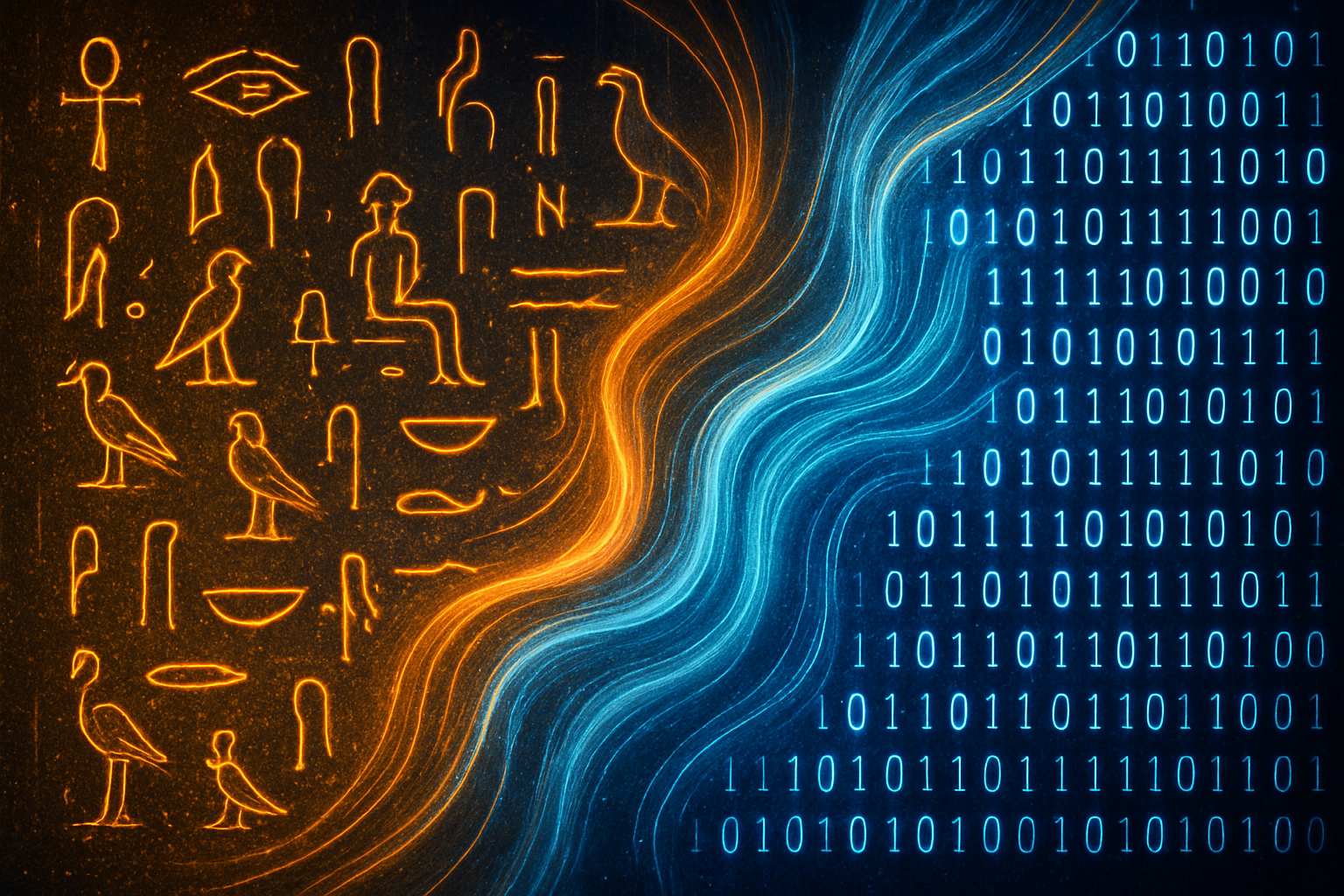
Chapter 5: The Language of Existence
Deciphering the fundamental codes that govern reality
Just as humans communicate through language, the universe communicates through its own fundamental codes. These are the underlying principles and patterns that govern existence, from the smallest subatomic particles to the grandest cosmic structures. Deciphering this language is key to understanding the deeper workings of reality.
The Universal Grammar
The laws of physics, mathematics, and even the principles of biology can be seen as the grammar of this universal language. They dictate how information is structured, processed, and transformed. For example, the laws of thermodynamics describe how energy (a form of information ) flows and changes, while mathematical equations provide the syntax for describing relationships between different informational entities.
Understanding this grammar allows us to not just observe reality, but to predict its behavior and even, to some extent, influence it. It\\'s like learning a foreign language – once you grasp its rules, you can begin to construct your own meaningful sentences within that framework.
Symbols and Archetypes
Beyond the literal grammar, the language of existence also includes symbols and archetypes. These are universal patterns of information that resonate across cultures and throughout history. They appear in myths, dreams, art, and even in the structure of our own minds.
For example, the circle often symbolizes wholeness and eternity, while the hero\\'s journey is a recurring narrative archetype. These symbols are not arbitrary; they are deeply embedded in the informational fabric of reality and provide clues to its underlying meaning and purpose.
The Power of Naming
In many ancient traditions, naming something was believed to give one power over it. From an informational perspective, this makes sense. To name something is to categorize it, to define its informational boundaries, and to integrate it into a larger informational framework. This act of naming brings order to chaos and allows us to interact with reality more effectively.
Similarly, understanding the true \"names\" or fundamental informational identities of things allows us to work with them more consciously and powerfully. This is not about magical incantations, but about aligning our consciousness with the underlying informational reality.
Learning to Listen
Learning the language of existence is not just an intellectual exercise; it\\'s a process of deep listening and observation. It requires us to quiet the noise of our everyday minds and tune into the subtle signals and patterns that the universe is constantly transmitting.
This can involve practices like meditation, mindfulness, and deep contemplation. It also involves paying attention to synchronicities, recurring themes, and intuitive insights. These are all ways in which the universe communicates its deeper informational truths to us.
Co-creating with the Language
Once we begin to understand the language of existence, we move from being passive observers to active co-creators. We can consciously choose to align our thoughts, intentions, and actions with the fundamental codes of reality, thereby shaping our own experiences and contributing to the ongoing evolution of the information universe.
This is the ultimate promise of Informatica: to not just understand the language of existence, but to speak it fluently, and in doing so, to participate more fully and consciously in the grand symphony of creation.

Chapter 6: Information Flow and Energy
How information movement creates energy and matter
In the information universe, energy and matter are not fundamental entities but rather manifestations of information in motion. This chapter explores the profound connection between information flow and the emergence of what we perceive as physical reality.
Information as the Precursor to Energy
Consider the famous equation E=mc². While it describes the equivalence of mass and energy, Informatica suggests a deeper layer: that both mass and energy are ultimately derived from information. Energy can be understood as the capacity for information to change or be transmitted, and matter as highly organized, localized packets of information.
When information flows, it creates gradients and differences, which manifest as energy. Think of a waterfall: the potential energy of the water at the top is a result of its informational position relative to the bottom. As the water flows (information changes position ), that potential energy is converted into kinetic energy.
The Dance of Information and Energy
At the quantum level, particles are not static objects but dynamic informational patterns. Their interactions, governed by informational rules (the laws of physics), involve the exchange of energy. This exchange is fundamentally an exchange of information, leading to changes in the informational state of the particles involved.
For example, when two electrons repel each other, they are exchanging information about their charge and spin, and this exchange is mediated by a photon, which itself is a packet of energy and information. The entire universe can be seen as a vast, interconnected network of information and energy constantly flowing and transforming.
From Information to Matter
Matter, from this perspective, is highly condensed and structured information. Atoms are stable informational configurations, held together by the continuous exchange of information (forces). The complexity of matter, from simple elements to complex biological molecules, reflects the increasing complexity and organization of the underlying information.
The very act of observation, which collapses quantum possibilities into definite realities, can be seen as an informational process where the observer\\'s consciousness interacts with the informational field, leading to the manifestation of matter and energy in a particular state.
Practical Implications
Understanding the relationship between information, energy, and matter has profound implications:
- Conscious Creation: If our thoughts and intentions are forms of information, then by consciously directing this information, we can influence the flow of energy and the manifestation of matter in our lives.
- Healing: Illness can be seen as a disruption in the informational flow within the body. By introducing coherent information (e.g., through meditation, positive affirmations, or energetic healing modalities), we can restore balance and promote healing.
- Innovation: New inventions and discoveries often arise from new ways of organizing information, leading to novel applications of energy and matter.
This chapter invites you to see beyond the apparent solidity of matter and the abstract nature of energy, to recognize the underlying informational dance that gives rise to both. By understanding this dance, we can become more conscious participants in the creation of our reality.

Chapter 7: The Quantum Information Layer
Exploring quantum mechanics as information processing
The quantum realm, with its perplexing phenomena like superposition and entanglement, is perhaps the clearest evidence that reality is fundamentally informational. This chapter delves into how quantum mechanics can be understood not just as a theory of particles, but as a theory of information processing at the most fundamental level.
Quantum Bits (Qubits ) of Reality
In classical computing, information is stored in bits, which can be either 0 or 1. In quantum computing, information is stored in qubits, which can be 0, 1, or both simultaneously (superposition). This ability to hold multiple states at once means that a single qubit can contain far more information than a classical bit.
From an Informatica perspective, the universe itself operates like a vast quantum computer, with every particle and field acting as a qubit. Reality, before observation, exists in a state of superposition – a vast array of possibilities, all containing potential information. The act of observation collapses this superposition, selecting a specific informational outcome.
Entanglement: The Informational Web
Entanglement is a phenomenon where two or more particles become linked in such a way that the state of one instantaneously influences the state of the others, regardless of distance. This \"spooky action at a distance\" can be understood as a fundamental informational connection.
Entangled particles share a common informational destiny. Measuring the state of one immediately provides information about the state of the other, even if they are light-years apart. This suggests that information is not limited by space or time in the same way that physical objects are, hinting at a deeper, non-local informational web underlying reality.
The Uncertainty Principle as an Informational Limit
Heisenberg\\'s Uncertainty Principle states that certain pairs of properties of a particle, like its position and momentum, cannot both be known with perfect accuracy simultaneously. From an informational viewpoint, this isn\\'t a limitation of our measurement tools, but a fundamental property of information itself.
It implies that the universe doesn\\'t hold all information about a particle simultaneously in a definite state. Instead, certain information only becomes definite when it is observed or measured, and the act of gaining one piece of information inherently limits our ability to gain another related piece.
Quantum Fields and Information Fields
Quantum field theory describes particles as excitations of underlying quantum fields that permeate all of space. From an Informatica perspective, these fields can be seen as fundamental information fields, and particles as localized patterns or packets of information within these fields.
Interactions between particles are then understood as exchanges of information between these fields, leading to changes in their informational states. This provides a unified framework for understanding all of reality as a dynamic interplay of information.
Practical Implications
Understanding the quantum information layer has profound implications for our understanding of consciousness and reality:
- Consciousness and Reality Creation: If observation collapses quantum states, then our consciousness plays an active role in shaping the reality we experience. Our attention and intention are powerful informational tools.
- Interconnectedness: Entanglement suggests a deep, non-local interconnectedness of all things. We are not separate from the universe but intimately woven into its informational fabric.
- Potentiality: The quantum realm is a realm of pure potentiality. By understanding this, we can tap into the vast informational possibilities that exist before they manifest as definite realities.
This chapter invites you to embrace the strangeness of the quantum world as a window into the true informational nature of existence, and to recognize your own role as a conscious information processor within this grand cosmic dance.
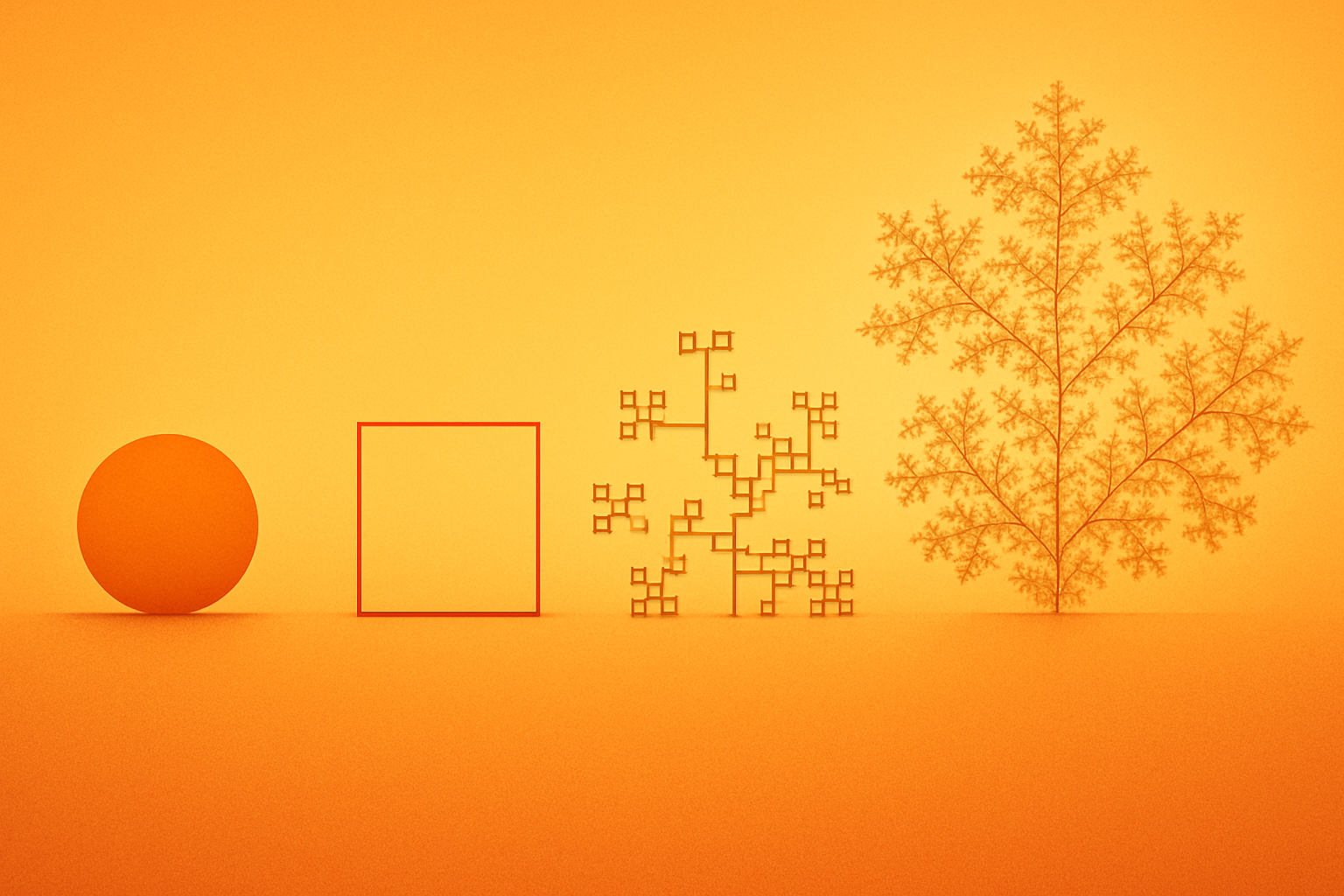
Chapter 8: Emergence and Complexity
How simple information rules create complex systems
From the intricate patterns of a snowflake to the bustling activity of a city, complexity often arises from surprisingly simple rules. This phenomenon, known as emergence, is a cornerstone of the information universe. This chapter explores how complex systems, including life and consciousness, emerge from the interactions of simpler informational units.
The Whole is More Than the Sum of its Parts
Emergence occurs when a system exhibits properties that its individual components do not possess on their own. These properties arise from the interactions and relationships between the components, rather than from the components themselves. In an informational context, this means that new, higher-level information patterns can emerge from the interplay of simpler information units.
Think of a flock of birds. No single bird knows the complex, fluid patterns the flock creates. These patterns emerge from each bird following a few simple rules: stay close to your neighbors, avoid collisions, and try to match their speed. The collective behavior is far more complex than the individual behaviors.
Simple Rules, Complex Outcomes
Many complex systems in nature operate on this principle. For example:
- Ant Colonies: Individual ants follow simple rules, but their collective behavior leads to complex foraging patterns, nest construction, and social organization.
- Brain Activity: Individual neurons fire in a relatively simple way, but their vast interconnectedness and interactions give rise to consciousness, thought, and emotion.
- Weather Patterns: Local interactions of air pressure, temperature, and humidity create global weather systems that are incredibly complex and difficult to predict.
In each case, the complexity is not programmed into any single component but emerges from the dynamic flow of information between them.
Self-Organization and Information
Emergent systems often exhibit self-organization, meaning they spontaneously form ordered structures and patterns without any external central control. This self-organization is driven by the inherent tendency of information to seek more stable and organized states.
For example, crystals self-organize from a disordered solution as molecules arrange themselves into a highly ordered informational lattice. Similarly, life itself can be seen as a self-organizing informational system that constantly processes and adapts to its environment.
The Edge of Chaos
Many emergent systems thrive at the \"edge of chaos,\" a state between perfect order and complete randomness. In this state, there is enough stability for patterns to form, but enough flexibility for the system to adapt and evolve. This is where information processing is most efficient and where new, innovative patterns are most likely to emerge.
This concept applies to everything from biological evolution to the development of human societies. Systems that are too rigid cannot adapt, while systems that are too chaotic cannot maintain coherence.
Practical Implications
Understanding emergence and complexity has profound implications for how we approach problems and create change:
- Systemic Thinking: Instead of focusing on individual components, we learn to see the whole system and the interactions between its parts.
- Leverage Points: Small changes to simple rules or initial conditions can have massive, emergent effects on the entire system.
- Innovation: True innovation often comes from combining existing information in novel ways, allowing new solutions to emerge.
- Personal Growth: Our habits and beliefs are emergent patterns from our daily choices. By changing small, consistent actions, we can shift our entire personal system.
This chapter invites you to see the world as a dynamic, emergent tapestry of information, where profound complexity arises from the elegant simplicity of underlying informational rules. By understanding these rules, we can become more effective co-creators within the information universe.
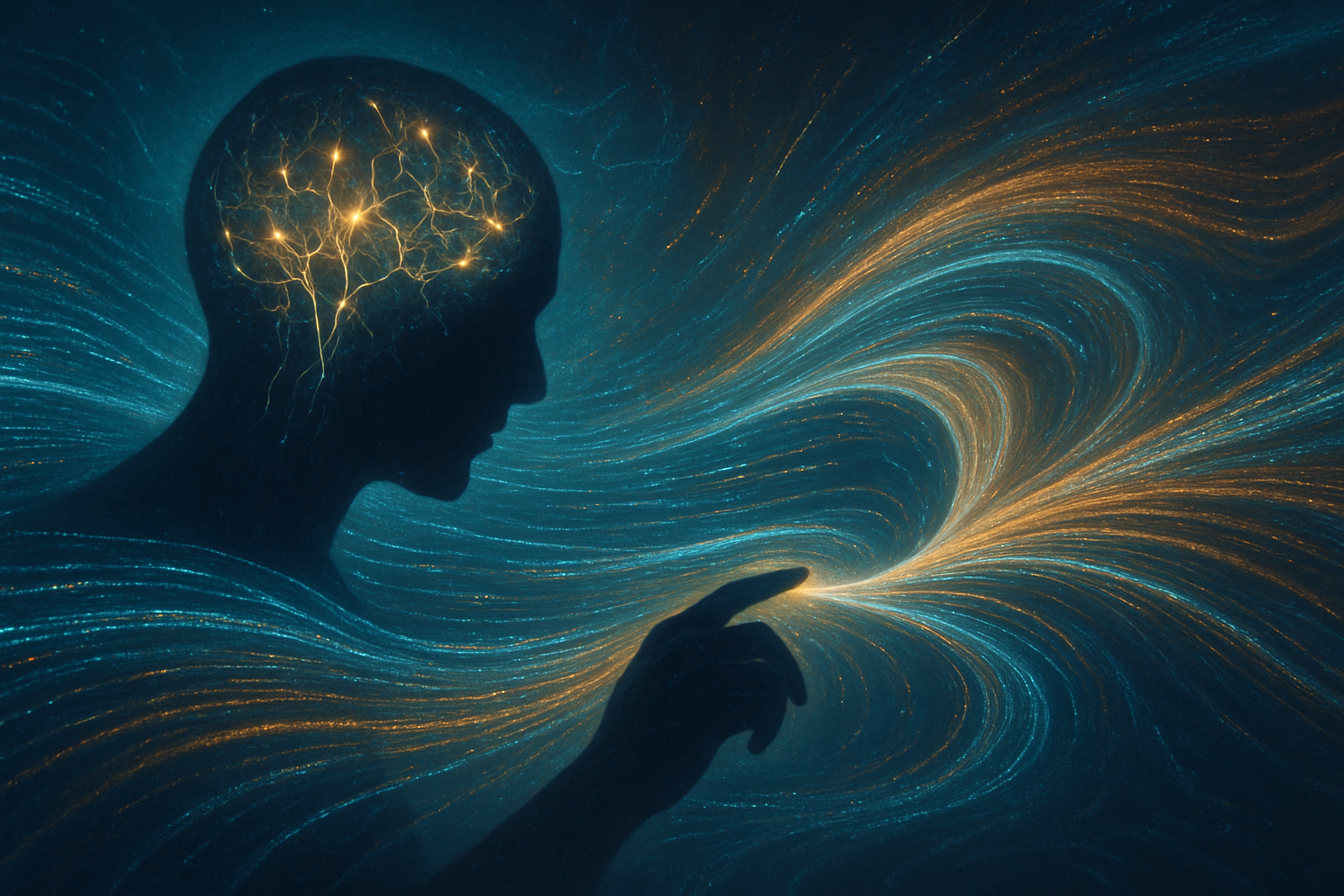
Chapter 9: The Observer Effect
How consciousness interacts with the information matrix
In the strange world of quantum mechanics, the act of observation can fundamentally alter the outcome of an experiment. This \"observer effect\" is not just a scientific curiosity; it offers a profound insight into how consciousness interacts with the information matrix of reality. This chapter explores the active role our awareness plays in shaping the world we experience.
Consciousness as an Information Processor
From an Informatica perspective, consciousness is not merely a passive recipient of information but an active information processor. Our senses gather raw data, but our minds interpret, organize, and give meaning to that data, effectively \"collapsing\" the vast possibilities of the information field into a coherent, perceived reality.
Just as a computer program processes raw input to produce a specific output, our consciousness processes the informational potential of the universe to create our subjective experience of reality. The quality of our \"program\" (our beliefs, expectations, and attention ) directly influences the \"output\" (our perceived reality).
The Quantum-Consciousness Connection
The observer effect in quantum physics suggests a direct link between consciousness and the manifestation of reality. Before observation, a quantum particle exists in a state of superposition, a cloud of probabilities. It is only when an observer interacts with it (measures it) that it \"chooses\" a definite state.
This doesn\\'t mean that our thoughts magically create reality out of nothing. Rather, it suggests that our consciousness acts as a filter and a selector, drawing specific information from the universal field of potentiality and bringing it into manifest existence. We are not just observing reality; we are actively participating in its creation.
Attention as a Manifestation Tool
Where we place our attention, we direct the flow of information. Attention is a powerful informational tool that focuses our consciousness and, in turn, influences what information manifests in our reality. What we consistently focus on tends to expand and become more prominent in our lives.
This is why practices like mindfulness and meditation are so powerful. By consciously directing our attention, we can shift our internal informational states, which then influences the external information we perceive and attract.
Belief Systems as Informational Programs
Our belief systems act as powerful informational programs that filter and interpret reality. If we believe something is impossible, our minds will filter out information that contradicts that belief, making it seem impossible. Conversely, if we believe something is possible, our minds will seek out and amplify information that supports that belief.
These beliefs are not just abstract ideas; they are active informational patterns that shape our perception and influence the manifestation of our experiences. By consciously examining and upgrading our belief systems, we can change the \"program\" that generates our reality.
Practical Implications
Understanding the observer effect and the role of consciousness has profound practical implications:
- Conscious Creation: We are not victims of circumstance but active co-creators of our reality. By consciously directing our attention, intention, and beliefs, we can shape our experiences.
- Personal Responsibility: We take responsibility for our perceptions and the reality we experience, knowing that our internal informational state plays a crucial role.
- Empowerment: This understanding empowers us to intentionally create the life we desire by aligning our inner information with our outer aspirations.
This chapter invites you to recognize the immense power of your own consciousness as an information processor and to consciously engage with the information matrix to create a reality that serves your highest good.

Chapter 10: Feedback Loops in Reality
Self-reinforcing information patterns
Reality is not a static picture but a dynamic process, constantly evolving through intricate feedback loops. These are self-reinforcing information patterns where the output of a system feeds back into its input, influencing its future behavior. Understanding these loops is crucial for navigating and influencing the information universe.
Positive and Negative Feedback Loops
Feedback loops can be broadly categorized into two types:
- Positive Feedback Loops: These amplify change. An increase in output leads to a further increase in input, accelerating the process. Examples include compound interest, population growth, or a runaway reaction. In personal terms, a positive feedback loop could be \"success breeds success,\" where initial achievements boost confidence, leading to more effort and further success.
- Negative Feedback Loops: These stabilize a system by counteracting change. An increase in output leads to a decrease in input, bringing the system back to equilibrium. Examples include a thermostat regulating temperature, the body regulating blood sugar, or a predator-prey relationship. In personal terms, a negative feedback loop could be \"learning from mistakes,\" where errors lead to adjustments that prevent future errors.
Both types of loops are essential for the dynamic balance and evolution of systems in the information universe.
Feedback Loops in Nature and Society
Feedback loops are ubiquitous in nature and society:
- Ecosystems: Predator-prey cycles, nutrient recycling, and climate regulation all involve complex feedback loops.
- Biological Systems: Hormonal regulation, immune responses, and genetic expression are governed by intricate biochemical feedback loops.
- Economic Systems: Supply and demand, inflation, and market bubbles are all driven by economic feedback loops.
- Social Dynamics: Public opinion, trend adoption, and social movements often involve powerful social feedback loops.
Recognizing these loops allows us to understand why certain patterns persist, why some systems are stable, and why others undergo rapid, exponential change.
Consciousness and Feedback Loops
Our own consciousness operates through powerful feedback loops. Our thoughts influence our emotions, which influence our actions, which then create results that reinforce our initial thoughts. This can be a virtuous cycle (positive thinking leading to positive outcomes ) or a vicious cycle (negative thinking leading to negative outcomes).
By becoming aware of these internal feedback loops, we gain the power to interrupt unhelpful patterns and intentionally create more beneficial ones. This is a core practice in personal transformation.
Intervening in Feedback Loops
To effectively influence a system, whether it\\'s our personal life, a relationship, or a larger social system, we need to identify its key feedback loops and find the \"leverage points\" where a small intervention can have a significant impact.
For example, to break a negative habit (a positive feedback loop), we need to interrupt the cycle at a critical point. To foster a positive change, we need to identify and strengthen the positive feedback loops that support it.
Practical Implications
Understanding feedback loops provides a powerful framework for:
- Problem Solving: Identifying the root causes of problems by tracing the feedback loops that sustain them.
- Strategic Planning: Designing interventions that leverage positive feedback loops for growth and negative feedback loops for stability.
- Personal Mastery: Consciously managing our internal thought-emotion-action cycles to create desired outcomes.
- Systemic Change: Recognizing that complex problems often require systemic solutions that address multiple interconnected feedback loops.
This chapter invites you to see reality as a dynamic interplay of self-reinforcing information patterns. By learning to identify and influence these feedback loops, you can become a more skilled navigator and co-creator within the information universe.
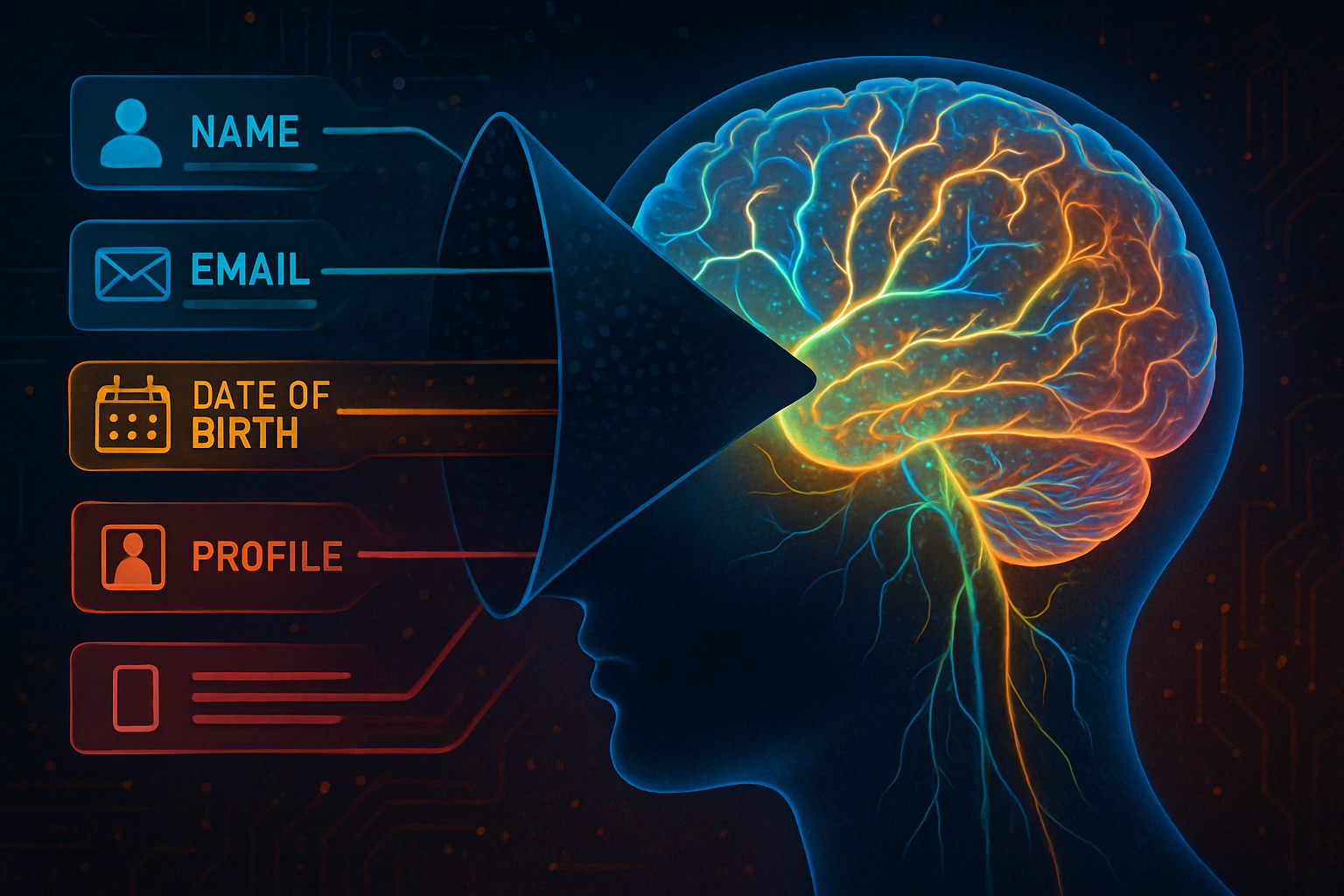
Chapter 11: Your Personal Information Filter
How consciousness processes reality\\'s data streams
Every moment, our senses are bombarded with an overwhelming amount of information. Yet, we only consciously perceive a tiny fraction of it. This is because our consciousness acts as a sophisticated personal information filter, selectively processing reality\\'s vast data streams. This chapter explores how this filter works and how it shapes our unique perception of the world.
The Necessity of Filtering
Imagine trying to process every single piece of data hitting your senses right now – every light photon, every sound wave, every pressure point on your skin. It would be an impossible task, leading to sensory overload. Our brains and minds have evolved complex filtering mechanisms to protect us from this overload and allow us to focus on what\\'s relevant for survival and thriving.
This filtering process is largely unconscious, driven by our past experiences, beliefs, values, and current intentions. It determines what we pay attention to, what we ignore, and how we interpret the information we do receive.
Components of the Filter
Our personal information filter is composed of several layers:
- Sensory Filters: Our sensory organs (eyes, ears, nose, etc. ) only detect a limited range of frequencies and stimuli. For example, we can\\'t see ultraviolet light or hear ultrasonic sounds.
- Neurological Filters: The brain further filters and organizes sensory input, prioritizing certain information and suppressing others. The Reticular Activating System (RAS) is a key part of this, acting as a gatekeeper for information reaching our conscious awareness.
- Belief Filters: Our deeply held beliefs and assumptions act as powerful lenses through which we interpret reality. Information that confirms our beliefs is often amplified, while contradictory information may be ignored or distorted.
- Emotional Filters: Our emotional state significantly influences what we perceive. When we are fearful, we tend to notice threats; when we are joyful, we tend to notice opportunities.
- Value Filters: What we value most will naturally draw our attention and influence our interpretation of events.
These layers work together to construct our unique subjective reality.
The Illusion of Objectivity
Because our personal information filter is so pervasive and largely unconscious, we often assume that our perception of reality is objective and universal. However, recognizing the existence of this filter reveals that each of us lives in a slightly (or vastly) different \"reality,\" shaped by our unique filtering mechanisms.
This explains why two people can experience the exact same event but come away with completely different interpretations. They are literally perceiving different information based on their internal filters.
Upgrading Your Filter
The good news is that while much of our filtering is unconscious, we can consciously work to upgrade and expand our personal information filter. This involves:
- Awareness: Becoming aware of our existing biases, beliefs, and emotional patterns that influence our perception.
- Curiosity: Actively seeking out new perspectives and information that challenges our existing views.
- Mindfulness: Practicing presence and non-judgmental observation to reduce the automatic filtering of the mind.
- Intentional Focus: Deliberately directing our attention to what we want to perceive and create in our lives.
By consciously refining our personal information filter, we can open ourselves to a richer, more expansive, and more accurate perception of the information universe, leading to greater understanding, empathy, and personal growth.
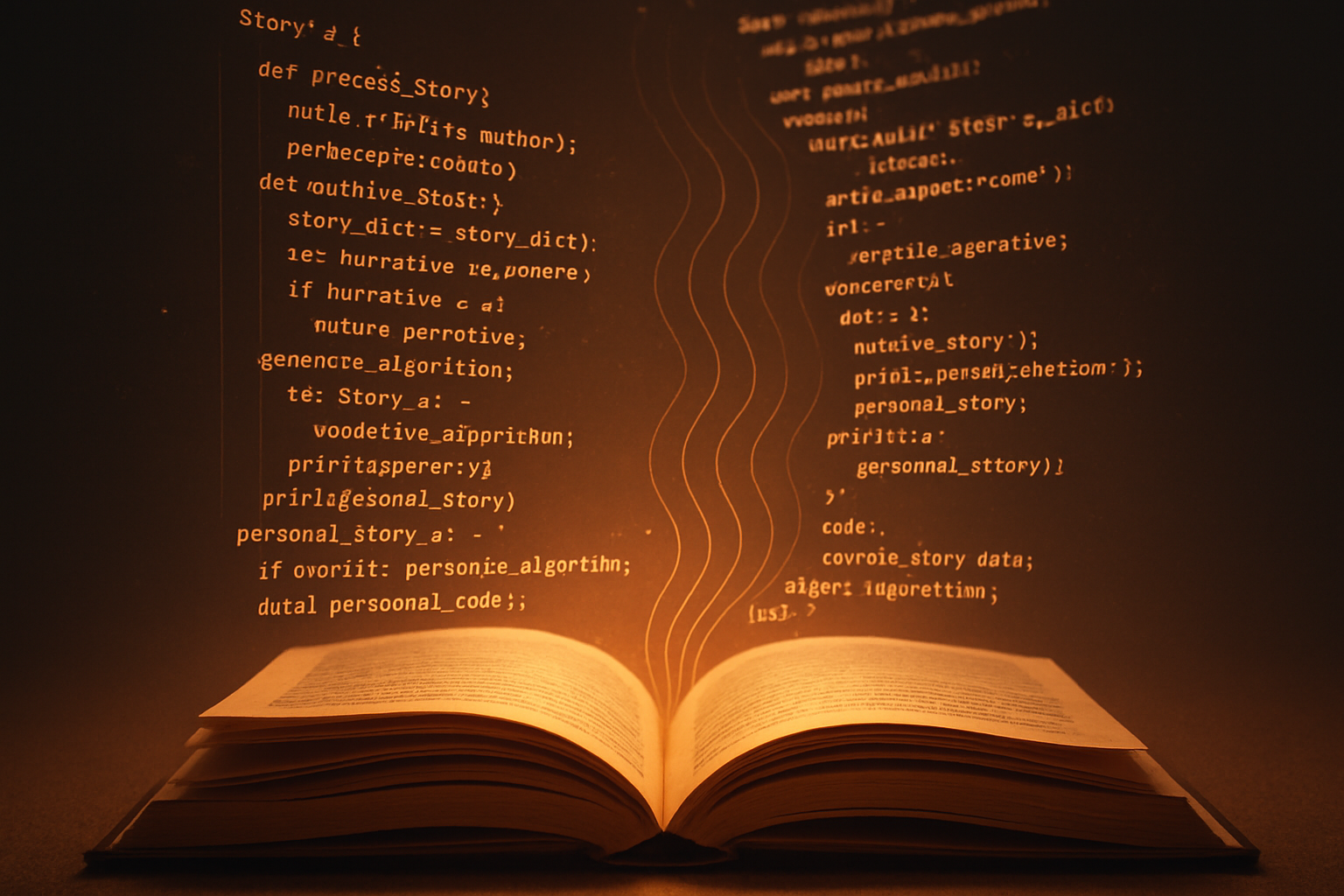
Chapter 12: The Stories We Code
Personal narratives as information programs
Humans are natural storytellers. From ancient myths to personal anecdotes, stories are how we make sense of the world and our place in it. In the information universe, these personal narratives function as powerful information programs, coding our perceptions, behaviors, and ultimately, our reality. This chapter explores how to recognize and rewrite the stories that shape our lives.
Narratives as Operating Systems
Think of your personal narrative as the operating system of your life. It\\'s the underlying framework of beliefs, assumptions, and interpretations that dictates how you process information, respond to events, and interact with the world. This \"code\" is largely written in childhood, influenced by family, culture, and early experiences.
Just like a computer program, your personal narrative has its own logic, its own loops, and its own outputs. If your narrative tells you you\\'re not good enough, your mind will seek out and amplify information that confirms that story, leading to behaviors and outcomes consistent with \"not good enough.\"
Identifying Your Core Stories
Many of our core stories operate unconsciously. To rewrite them, we first need to identify them. This involves paying attention to:
- Recurring Themes: What patterns do you notice in your challenges, relationships, or successes?
- Automatic Thoughts: What are the immediate thoughts that arise in challenging situations? These often reveal underlying beliefs.
- Emotional Triggers: What situations consistently evoke strong emotional responses? These can point to deeply held narratives.
- Self-Talk: How do you talk to yourself? Your internal dialogue is a direct reflection of your personal narrative.
Once identified, you can begin to see how these stories have been \"coding\" your reality.
The Power of Rewriting
The good news is that unlike a fixed computer program, your personal narrative can be rewritten. This is not about denying reality, but about reinterpreting it and creating new, more empowering information programs for yourself.
Rewriting involves:
- Challenging Assumptions: Questioning the \"truth\" of your old stories. Are they truly factual, or just interpretations?
- Seeking New Evidence: Actively looking for information and experiences that support a new, desired narrative.
- Crafting a New Story: Deliberately creating a new, empowering narrative about yourself and your capabilities. This new story should be compelling and believable to you.
- Consistent Reinforcement: Repeatedly telling yourself the new story, acting in alignment with it, and seeking experiences that confirm it. This creates new neural pathways and strengthens the new \"code.\"
This process is similar to debugging and updating software. You identify the faulty code (limiting narrative ), write new, more efficient code (empowering narrative), and then run it repeatedly until it becomes the new default.
Practical Applications
Rewriting your personal narratives has profound practical implications:
- Increased Resilience: By reframing challenges, you can bounce back more quickly from setbacks.
- Enhanced Performance: Empowering narratives can unlock hidden potential and improve performance in all areas of life.
- Improved Relationships: By changing your story about others or about relationships, you can foster healthier connections.
- Greater Fulfillment: Aligning your life with a narrative that truly serves you leads to deeper satisfaction and purpose.
This chapter invites you to become the conscious programmer of your own life. By understanding that your personal narratives are information programs, you gain the power to rewrite your destiny and create a reality that truly reflects your highest aspirations.
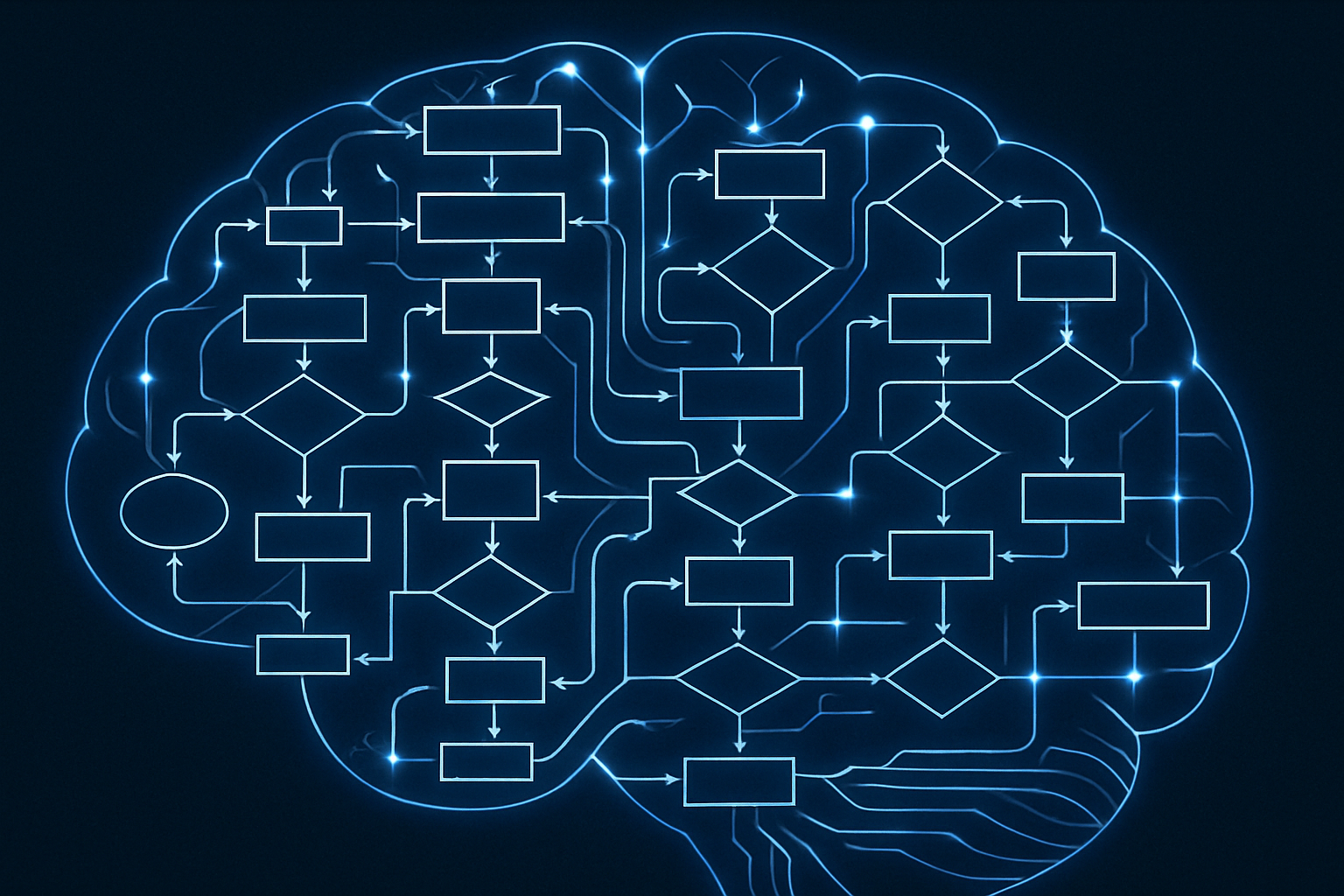
Chapter 13: Cognitive Patterns and Mental Algorithms
Thought patterns as information processing
Our minds are constantly processing information, and they do so through established cognitive patterns and mental algorithms. These are the habitual ways we think, reason, and solve problems. In the information universe, understanding these internal processes is key to optimizing our mental performance and expanding our consciousness.
The Brain as an Information Processor
The human brain is an incredibly complex information processing system. It takes in sensory data, stores memories, makes decisions, and generates responses. It does this not randomly, but through intricate neural networks that have learned specific patterns and algorithms over time.
These mental algorithms are like the software programs running in our minds. They dictate how we approach tasks, how we interpret information, and how we react to situations. Some are highly efficient and beneficial, while others can be limiting or lead to errors in judgment.
Common Cognitive Patterns
We all develop habitual ways of thinking, often without conscious awareness. Some common cognitive patterns include:
- Confirmation Bias: The tendency to seek out and interpret information in a way that confirms one\\'s existing beliefs.
- Anchoring Bias: Relying too heavily on the first piece of information offered (the \"anchor\" ) when making decisions.
- Availability Heuristic: Overestimating the likelihood of events that are easily recalled from memory.
- Fixed vs. Growth Mindset: Believing abilities are static vs. believing they can be developed through effort.
Recognizing these patterns is the first step towards consciously modifying them.
Optimizing Your Mental Algorithms
Just as a programmer optimizes code for better performance, we can optimize our mental algorithms for more effective thinking. This involves:
- Debugging: Identifying and challenging irrational thoughts, limiting beliefs, and cognitive biases.
- Updating: Learning new mental models, problem-solving strategies, and decision-making frameworks.
- Refactoring: Simplifying complex thought processes and eliminating unnecessary mental clutter.
- Training: Practicing new ways of thinking until they become habitual and automatic.
Techniques like critical thinking, logical reasoning, mindfulness, and learning from diverse perspectives are all ways to refine our mental algorithms.
The Power of Mental Models
Mental models are simplified representations of how the world works. They are like mental shortcuts that help us understand complex situations and make quick decisions. Examples include supply and demand, cause and effect, or the concept of leverage.
The more accurate and diverse our mental models, the better equipped we are to process information effectively and navigate the complexities of the information universe. Continuously learning and integrating new mental models is a powerful way to expand our cognitive capacity.
Practical Implications
Optimizing our cognitive patterns and mental algorithms has profound practical implications:
- Improved Decision-Making: Making more rational and effective choices by overcoming biases.
- Enhanced Problem Solving: Approaching challenges with more creative and efficient strategies.
- Greater Adaptability: Being able to learn quickly and adjust to new information and changing circumstances.
- Increased Self-Awareness: Understanding how our own minds work and taking conscious control of our thought processes.
This chapter invites you to become the conscious architect of your own mind. By understanding your cognitive patterns and mental algorithms, you gain the power to optimize your thinking, expand your consciousness, and navigate the information universe with greater clarity and effectiveness.
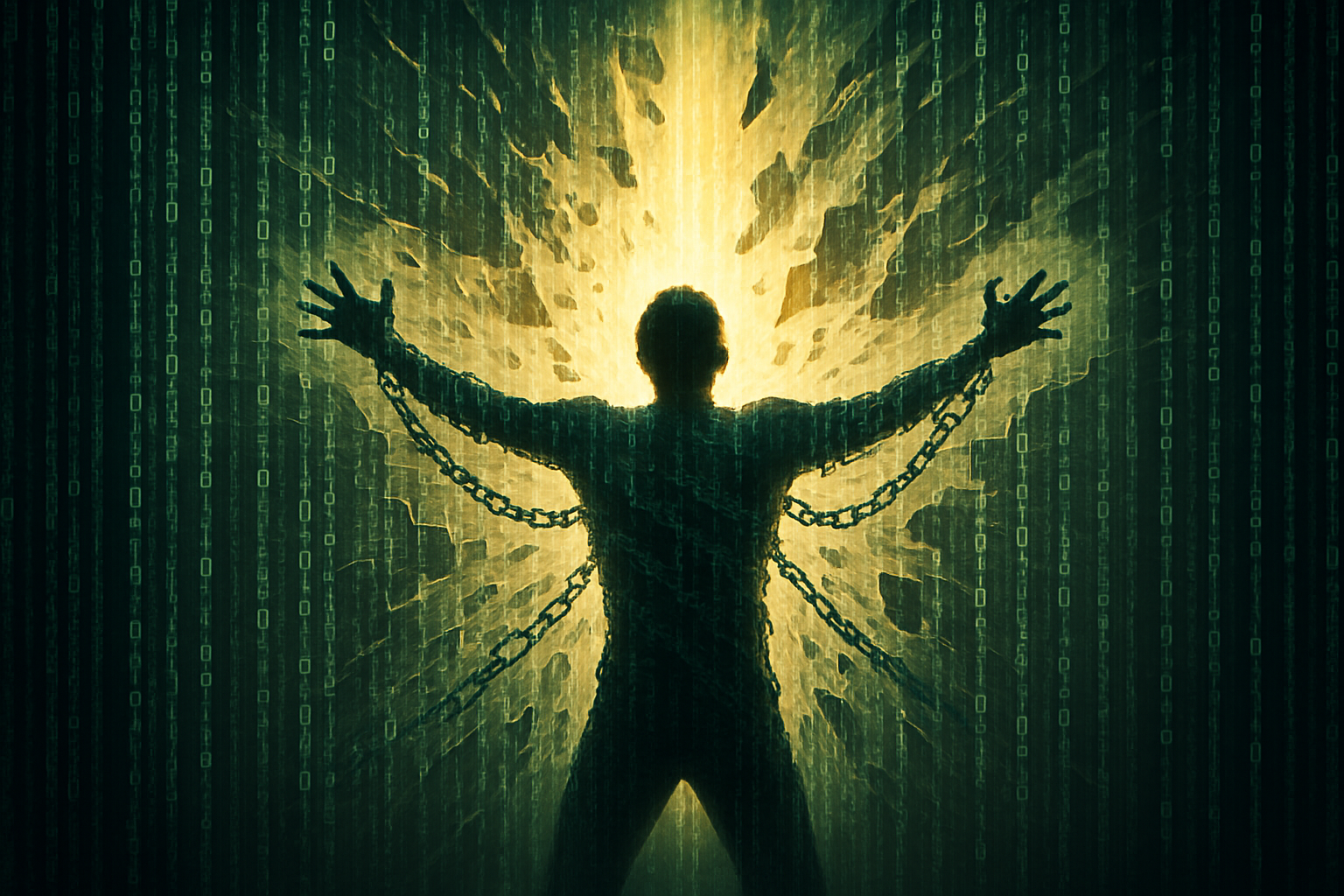
Chapter 14: Breaking Free from Limited Programming
Transcending restrictive information patterns
Just as a computer program can have bugs or outdated code, our personal information systems can be limited by restrictive programming – ingrained beliefs, fears, and habits that prevent us from reaching our full potential. This chapter explores how to identify and transcend these limiting information patterns, freeing ourselves to create a more expansive reality.
Identifying Limiting Programs
Limiting programs often manifest as:
- Self-Doubt: \"I\\'m not good enough,\" \"I can\\'t do that.\"
- Fear of Failure/Success: Procrastination, self-sabotage.
- Victim Mentality: Blaming external circumstances for personal challenges.
- Scarcity Mindset: Believing there isn\\'t enough for everyone.
- Fixed Mindset: Believing abilities are inherent and unchangeable.
These programs operate unconsciously, influencing our thoughts, emotions, and actions without our explicit awareness. They are like invisible walls that keep us confined within a limited reality.
The Origin of the Code
Most of our limiting programs are \"installed\" early in life, through childhood experiences, parental conditioning, societal norms, and cultural narratives. They were often created as protective mechanisms, but over time, they can become restrictive, preventing growth and expansion.
For example, a child told they are \"not artistic\" might develop a limiting program that prevents them from exploring creative pursuits later in life, even if they have innate talent.
Debugging and Rewriting the Code
Breaking free from limited programming involves a process of conscious debugging and rewriting. This is an active process that requires self-awareness, courage, and consistent effort:
- Awareness: The first step is to become aware of your limiting programs. What are the recurring negative thoughts or beliefs that hold you back?
- Challenge and Question: Once identified, question the validity of these programs. Are they truly factual, or are they just old, outdated beliefs? Seek evidence that contradicts them.
- Reframe and Reinterpret: Change the narrative around past experiences that contributed to the limiting program. See them as learning opportunities rather than defining failures.
- Install New Programs: Actively cultivate new, empowering beliefs and thought patterns. Use affirmations, visualization, and consistent action to reinforce these new programs.
- Seek Support: Working with coaches, therapists, or supportive communities can provide valuable external perspectives and accountability in this process.
This process is akin to updating your operating system. You remove the old, inefficient code and replace it with new, optimized programs that support your desired reality.
Practical Implications
Breaking free from limited programming has profound practical implications:
- Unlocking Potential: Accessing untapped abilities and talents.
- Increased Freedom: Experiencing greater autonomy and choice in your life.
- Enhanced Resilience: Developing the capacity to navigate challenges with greater ease.
- Greater Fulfillment: Living a life that is more aligned with your true self and highest aspirations.
This chapter invites you to become the master programmer of your own mind. By consciously transcending restrictive information patterns, you can break free from self-imposed limitations and create a reality of limitless possibilities within the information universe.

Chapter 15: Expanding Your Information Bandwidth
Increasing capacity to perceive reality\\'s data streams
Just as a broadband internet connection allows for faster and more comprehensive data transfer, expanding your personal information bandwidth increases your capacity to perceive and process reality\\'s vast data streams. This chapter explores practices and perspectives that can help you open up to a richer, more nuanced understanding of the information universe.
Beyond the Five Senses
Our conventional understanding of perception is often limited to the five physical senses. However, the information universe suggests that reality is far richer than what our standard sensory equipment can detect. Expanding your information bandwidth involves tuning into more subtle forms of information.
This can include:
- Intuition: Direct knowing or insight that bypasses logical reasoning.
- Empathy: The ability to perceive and understand the emotional information of others.
- Energetic Sensitivity: Sensing subtle energy fields and vibrations.
- Synchronicity: Noticing meaningful coincidences as information from the universe.
These are all forms of information that our consciousness can access when its bandwidth is expanded.
Practices for Expansion
Several practices can help expand your information bandwidth:
- Mindfulness and Meditation: Quieting the mind reduces mental noise and allows for greater sensitivity to subtle information.
- Nature Immersion: Spending time in nature can help attune your senses to natural patterns and rhythms, expanding your perceptual range.
- Creative Expression: Engaging in art, music, writing, or other creative pursuits can open up new channels for information flow and interpretation.
- Learning New Skills: Acquiring new knowledge and skills literally rewires your brain, increasing its capacity to process new types of information.
- Challenging Assumptions: Actively questioning your beliefs and biases can break down mental filters that limit your perception.
- Open-Mindedness: Cultivating a willingness to consider new ideas and perspectives, even if they contradict your existing worldview.
These practices help to clear the \"informational clutter\" and increase the signal-to-noise ratio in your perception.
The Interconnectedness of All Things
As your information bandwidth expands, you begin to perceive the deep interconnectedness of all things. You see how seemingly separate events and entities are part of a larger, unified information field. This can lead to a profound sense of unity and belonging.
This expanded perception also allows for a more holistic understanding of problems and solutions. Instead of seeing isolated issues, you begin to see the underlying informational patterns that connect them, enabling more effective and sustainable interventions.
Practical Implications
Expanding your information bandwidth has profound practical implications:
- Enhanced Intuition: Making better decisions by tapping into deeper levels of knowing.
- Greater Empathy and Connection: Fostering deeper relationships by understanding others on a more subtle level.
- Increased Creativity and Innovation: Accessing novel ideas and solutions by perceiving new informational connections.
- Deeper Understanding of Reality: Gaining a more comprehensive and nuanced appreciation of the information universe.
This chapter invites you to consciously cultivate practices that expand your perceptual abilities, allowing you to receive and process more of reality\\'s vast data streams. By doing so, you will not only enrich your own life but also become a more powerful and insightful participant in the ongoing evolution of the information universe.
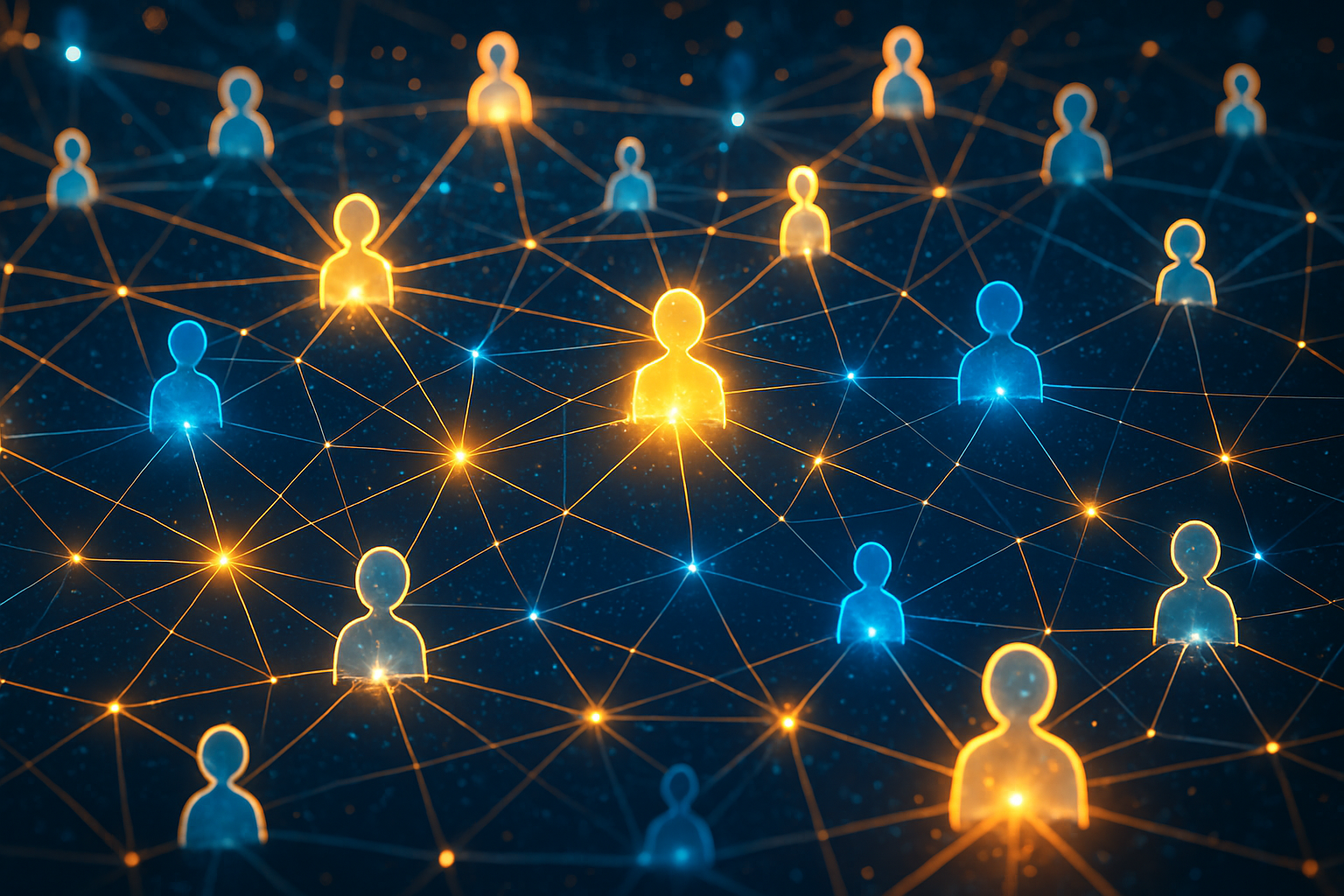
Chapter 16: Social Information Networks
Human societies as collective information systems
Just as individual minds process information, human societies function as vast, complex collective information systems. From ancient tribes to globalized nations, our social structures are built upon the exchange, storage, and processing of information. This chapter explores how human societies operate as intricate information networks.
Society as a Distributed Information System
Think of a society as a distributed information system, where individuals are nodes and communication channels (language, media, institutions ) are the connections. Information flows through these channels, shaping collective beliefs, behaviors, and cultural norms. The health and effectiveness of a society depend on the quality and flow of this information.
Just as a computer network can be efficient or inefficient, resilient or vulnerable, so too can a social information network. Misinformation, censorship, or communication breakdowns can lead to societal dysfunction, while open and accurate information flow fosters collaboration and progress.
Collective Intelligence and Emergence
When individuals within a society share and process information effectively, collective intelligence can emerge. This is the ability of a group to solve problems, innovate, and make decisions that are superior to what any single individual could achieve alone.
Examples include scientific communities collaborating on research, open-source software development, or democratic processes. The wisdom of crowds, when properly harnessed, is a powerful example of emergent collective intelligence arising from distributed information processing.
Cultural Information and Memes
Cultures are essentially vast repositories of shared information – values, beliefs, traditions, knowledge, and practices. These are transmitted across generations through various means, including education, storytelling, and social rituals. Richard Dawkins coined the term \"meme\" to describe units of cultural information that spread from mind to mind, analogous to genes in biological evolution.
Memes (ideas, phrases, trends) propagate through social networks, influencing collective thought and behavior. Understanding how memes spread and evolve is crucial for understanding cultural dynamics and social change.
The Impact of Digital Networks
The advent of digital technologies and the internet has dramatically transformed social information networks. Information can now spread globally at unprecedented speeds, connecting individuals and groups across vast distances. This has led to both incredible opportunities and significant challenges:
- Opportunities: Global collaboration, rapid knowledge dissemination, increased transparency, and new forms of social organization.
- Challenges: The spread of misinformation, echo chambers, polarization, and the erosion of traditional gatekeepers of information.
Navigating this new digital landscape requires a sophisticated understanding of social information dynamics.
Practical Implications
Understanding social information networks has profound practical implications:
- Effective Communication: Designing messages that resonate and spread effectively within a given social network.
- Building Strong Communities: Fostering environments that encourage open information exchange and collective intelligence.
- Addressing Social Challenges: Identifying and disrupting negative informational feedback loops (e.g., prejudice, fear) and promoting positive ones.
- Leadership: Guiding collective action by effectively communicating vision and coordinating information flow.
This chapter invites you to see human societies as living, breathing information systems. By understanding their dynamics, you can become a more conscious and effective participant in shaping the collective future of the information universe.

Chapter 17: Cultural Programming and Belief Systems
Shared information patterns that create cultural realities
Just as individuals are shaped by their personal narratives, entire cultures are shaped by shared information patterns – their collective beliefs, values, traditions, and assumptions. This \"cultural programming\" creates a shared reality for its members, influencing everything from daily customs to fundamental worldviews. This chapter explores how cultural programming works and how it impacts our perception of the information universe.
Culture as a Shared Operating System
Think of a culture as a shared operating system that runs on the collective minds of its members. It provides the default settings, the common language, the accepted rules, and the preferred ways of processing information. This cultural code is largely invisible to those within it, yet it profoundly shapes their perceptions and behaviors.
From the moment we are born, we are immersed in this cultural programming. We learn what is considered \"normal,\" \"right,\" and \"true\" through observation, education, and social reinforcement. This programming is incredibly powerful because it operates at a subconscious level, often feeling like \"just the way things are.\"
The Power of Collective Beliefs
Collective beliefs are powerful informational patterns that can literally shape reality. If a culture collectively believes in the power of a certain ritual, that belief can manifest tangible effects. If a society believes in scarcity, its economic systems will reflect that belief, even if resources are abundant.
These shared beliefs create a consensual reality. While individual perceptions may vary, the dominant cultural narrative provides a framework within which most members operate. Challenging these deeply ingrained collective beliefs can be difficult, as they are often defended vigorously by the system itself.
Cultural Filters and Biases
Just like personal information filters, cultures develop collective filters and biases. Certain information may be amplified, while other information is suppressed or ignored, depending on whether it aligns with the dominant cultural narrative. This can lead to \"cultural blind spots\" where entire societies fail to perceive certain realities.
For example, a culture that values individualism might struggle to understand the importance of collective well-being, while a culture that values tradition might resist new information that challenges established norms.
Evolving Cultural Code
Cultural programming is not static; it evolves over time, often through the interplay of new information, external influences, and internal shifts. Cultural evolution can be slow and gradual, or it can be rapid and revolutionary, especially when new information technologies emerge.
Understanding the mechanisms of cultural change allows us to consciously participate in shaping the evolution of our societies. By introducing new ideas, challenging old narratives, and fostering open dialogue, we can contribute to the development of more adaptive and inclusive cultural code.
Practical Implications
Understanding cultural programming and belief systems has profound practical implications:
- Intercultural Understanding: Developing empathy and respect for different cultural realities by recognizing their underlying informational code.
- Social Change: Identifying the core beliefs that sustain societal problems and designing interventions that target these informational patterns.
- Personal Liberation: Recognizing how our own beliefs have been shaped by our culture and consciously choosing which aspects to retain or transcend.
- Effective Leadership: Guiding cultural shifts by understanding the existing narratives and communicating new visions in a way that resonates with the collective.
This chapter invites you to see cultures as vast, living information programs. By understanding their code, you can navigate diverse cultural landscapes with greater wisdom, contribute to positive social change, and liberate yourself from unconscious cultural limitations within the information universe.
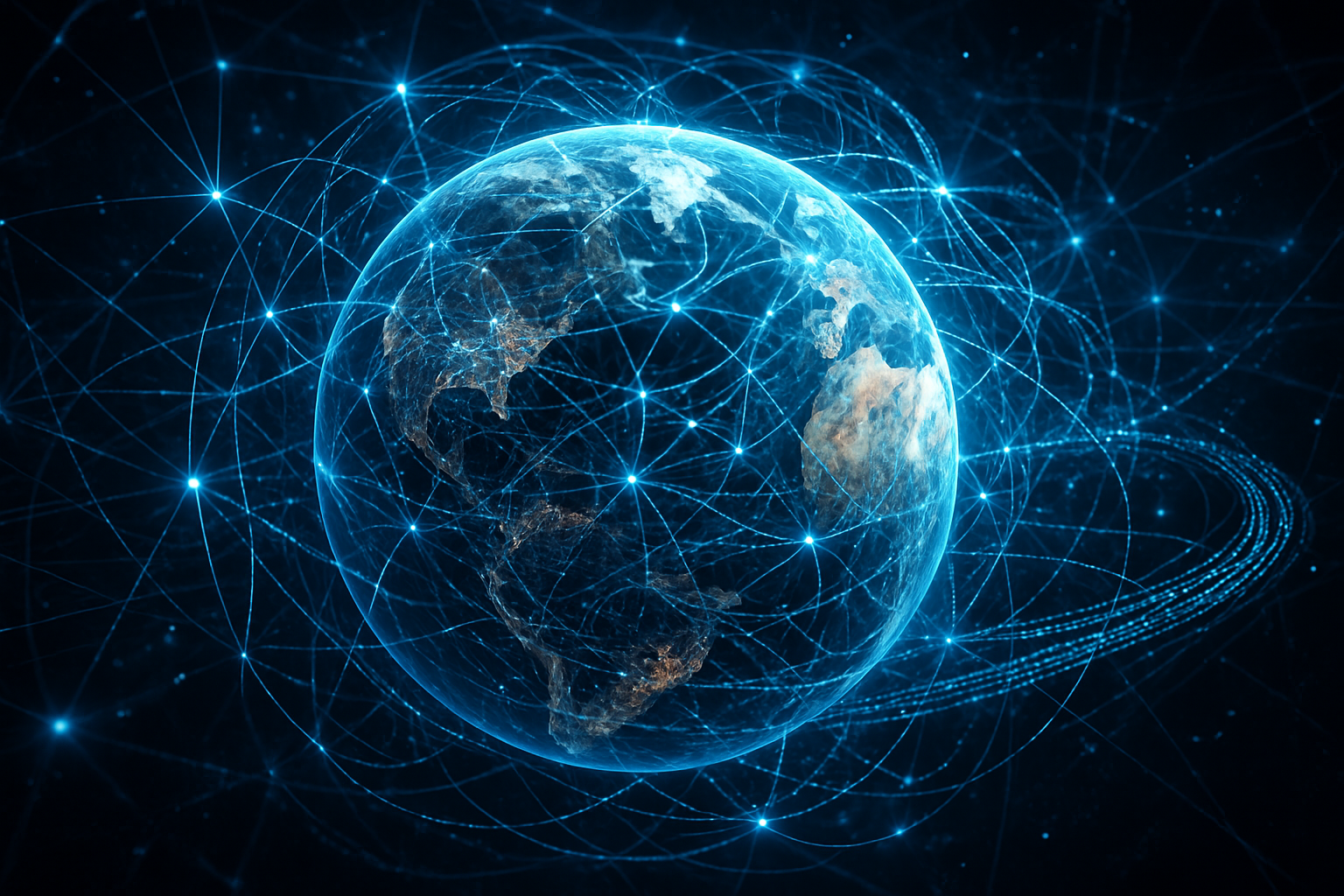
Chapter 18: The Global Information Web
Technology as amplification of natural information networks
The internet, with its vast interconnectedness, often feels like a new phenomenon. Yet, from an Informatica perspective, it is merely an amplification and externalization of natural information networks that have always existed. This chapter explores the global information web, seeing technology not as separate from nature, but as an extension of the universe\\'s inherent drive to process and exchange information.
From Neural Networks to Digital Networks
Consider the striking parallels between biological neural networks (like our brains ) and digital communication networks (like the internet). Both are complex systems of interconnected nodes that process and transmit information. Neurons fire and connect, creating thoughts and consciousness; computers communicate and link, creating the global web of data.
This suggests that the impulse to connect and exchange information is fundamental to existence. Technology, in this view, is not an artificial imposition but a natural evolution of the universe\\'s informational architecture, allowing for information to flow at unprecedented scales and speeds.
The Internet as a Global Brain
Some theorists have likened the internet to a \"global brain,\" a nascent collective consciousness emerging from the interconnectedness of billions of human minds and machines. While this is a metaphor, it highlights the immense capacity of the internet to store, process, and disseminate information on a planetary scale.
The internet allows for instant communication, access to vast libraries of knowledge, and the formation of global communities. It amplifies both the best and worst aspects of human information exchange, accelerating both innovation and the spread of misinformation.
Information Overload and Digital Filters
Just as our individual minds have filters to manage information overload, the global information web has its own filters – algorithms, search engines, social media feeds – that curate and prioritize information. While these filters can be helpful, they also create \"echo chambers\" and \"filter bubbles,\" where individuals are primarily exposed to information that confirms their existing beliefs.
Navigating the global information web effectively requires conscious awareness of these digital filters and a proactive effort to seek out diverse perspectives and critically evaluate information sources.
The Future of Integration
As technology continues to advance, the integration between human consciousness and the global information web will only deepen. Brain-computer interfaces, augmented reality, and artificial intelligence are all pushing the boundaries of how we interact with and become part of this vast informational ecosystem.
This raises profound questions about identity, consciousness, and the future of humanity. Will we become more connected and collectively intelligent, or will we risk losing our individual autonomy in the face of overwhelming information flows?
Practical Implications
Understanding the global information web has profound practical implications:
- Digital Literacy: Developing the skills to critically evaluate information, identify biases, and navigate complex digital environments.
- Ethical Technology Use: Consciously designing and using technology in ways that promote well-being, connection, and truth.
- Global Collaboration: Leveraging digital tools to address planetary challenges and foster cross-cultural understanding.
- Conscious Participation: Recognizing our role as nodes in this global network and intentionally contributing to its positive evolution.
This chapter invites you to see the global information web not just as a tool, but as a living, evolving extension of the information universe. By understanding its dynamics, you can become a more conscious and responsible participant in shaping our collective digital future.
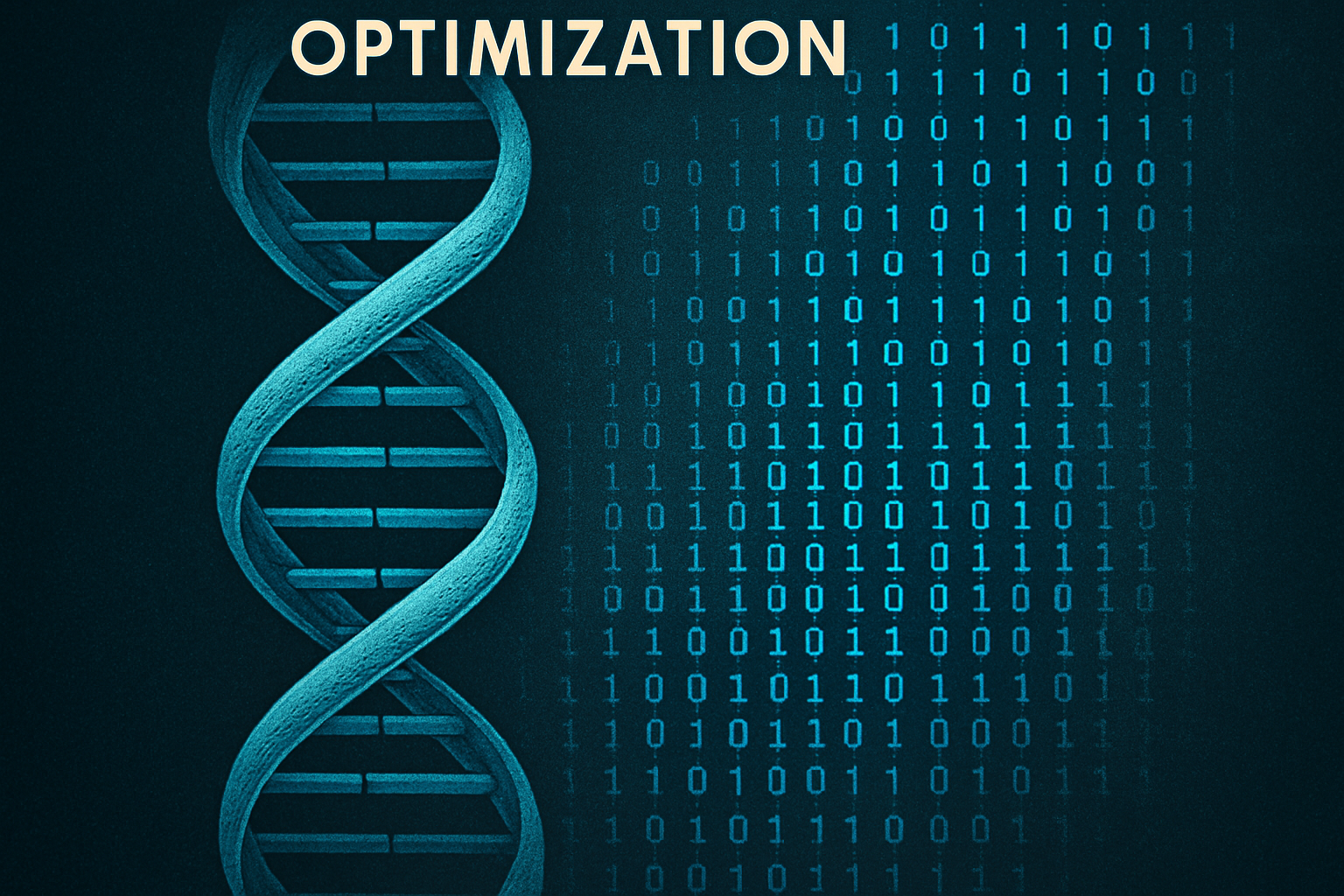
Chapter 19: Evolution as Information Processing
Biological and social evolution as information optimization
Evolution, whether biological or social, can be understood as a grand process of information processing and optimization. Life forms and societies constantly gather, store, transmit, and adapt information to survive and thrive in changing environments. This chapter explores how evolution functions as an informational algorithm, driving complexity and adaptation in the information universe.
DNA: The Blueprint of Biological Information
At the heart of biological evolution is DNA, the ultimate information storage system. DNA contains the genetic blueprint – the instructions for building and operating an organism. Mutations introduce new information, natural selection acts as a filter, selecting for beneficial information, and reproduction transmits this optimized information to the next generation.
From this perspective, species are successful information processing units that have found effective strategies for encoding, decoding, and adapting information to their environment. Evolution is the continuous refinement of this genetic code through a vast, iterative feedback loop.
Evolutionary Algorithms in Nature
The principles of biological evolution are so effective that they have inspired \"evolutionary algorithms\" in computer science, used to solve complex optimization problems. These algorithms mimic natural selection, iteratively refining solutions by introducing variations and selecting for the \"fittest\" ones.
This parallel suggests that nature itself employs sophisticated informational algorithms to drive its creative processes, constantly exploring the vast space of possibilities to find optimal solutions for survival and adaptation.
Social and Cultural Evolution
Evolution is not limited to biology. Human societies and cultures also evolve through information processing. Ideas, technologies, social structures, and belief systems (memes ) are transmitted, adapted, and selected over time. Societies that can effectively process new information, adapt their structures, and innovate tend to thrive.
For example, the development of writing systems allowed for more efficient storage and transmission of information, leading to more complex societies. The scientific method is an evolutionary algorithm for knowledge, constantly refining our understanding of the world through observation, hypothesis, and testing.
The Role of Information in Adaptation
Adaptation is fundamentally an informational process. Organisms and societies that can quickly and accurately gather information about their environment, process it, and generate appropriate responses are more likely to survive. Those that fail to adapt their informational strategies risk extinction.
This highlights the importance of learning, innovation, and flexibility in the face of change. The ability to acquire and integrate new information is a key driver of evolutionary success.
Practical Implications
Understanding evolution as information processing has profound practical implications:
- Personal Growth: Recognizing that we can consciously evolve by intentionally seeking new information, adapting our beliefs, and refining our behaviors.
- Organizational Development: Designing organizations that are agile, adaptable, and capable of rapid information processing and learning.
- Societal Resilience: Fostering open information exchange, critical thinking, and adaptive governance to build more resilient societies.
- Innovation Strategy: Applying evolutionary principles to problem-solving, allowing for iterative refinement and the emergence of novel solutions.
This chapter invites you to see evolution as a continuous, universal process of informational optimization. By understanding its mechanisms, you can consciously participate in your own evolution and contribute to the ongoing advancement of life within the information universe.

Chapter 20: The Future of Human-Information Integration
Envisioning humanity\\'s evolution with the information matrix
As we conclude our journey through Informatica, we turn our gaze to the future – a future where the integration between humanity and the information matrix deepens in unprecedented ways. This chapter explores the exciting and challenging possibilities of human-information integration, envisioning humanity\\'s ongoing evolution within the cosmic information field.
The Blurring Lines: Human and Machine
We are already witnessing the blurring of lines between human consciousness and digital information systems. Smartphones are extensions of our minds, social media platforms are extensions of our social networks, and AI is becoming increasingly integrated into our daily lives.
In the future, this integration is likely to become even more profound. Brain-computer interfaces could allow for direct thought-to-digital communication. Augmented reality could seamlessly overlay digital information onto our physical world. Artificial intelligence could become indistinguishable from human intelligence, leading to new forms of consciousness.
Consciousness Expansion and Collective Intelligence
As our access to and processing of information expands, so too does the potential for consciousness expansion. By tapping into vast reservoirs of knowledge and connecting with a global network of minds, individual consciousness can transcend its current limitations.
This could lead to a new era of collective intelligence, where humanity operates as a more unified, highly efficient information processing system, capable of addressing complex global challenges with unprecedented insight and coordination.
Ethical Considerations and Challenges
However, this future also presents significant ethical considerations and challenges:
- Privacy and Autonomy: How do we protect individual privacy and autonomy in a world where personal information is constantly flowing and being processed?
- Control and Governance: Who controls these powerful information systems, and how do we ensure they are used for the benefit of all humanity?
- Digital Divide: How do we ensure equitable access to these technologies, preventing a new form of information-based inequality?
- Defining Humanity: As we integrate more with technology, what does it mean to be human? Where do the boundaries of consciousness lie?
Addressing these questions will require deep wisdom, ethical foresight, and global collaboration.
The Next Stage of Evolution
From an Informatica perspective, human-information integration is not just a technological trend but the next stage of our evolution. Just as life evolved from simple cells to complex organisms, and consciousness emerged from neural networks, humanity is now evolving into a more deeply integrated information-processing entity.
This evolution is not predetermined. We are active participants in shaping its direction. By consciously engaging with the information matrix, by making ethical choices about technology, and by fostering a global consciousness of interconnectedness, we can guide this evolution towards a future of greater wisdom, compassion, and flourishing.
Conclusion: Dancing in the Matrix
Our journey through Informatica has revealed that reality is a dynamic, living information system, filled with endless patterns waiting to be recognized. By understanding the fundamental nature of information, we gain the power to navigate this \"matrix\" with greater clarity, purpose, and joy.
You are not just an observer of this information universe; you are an integral part of it, a conscious information processor with the power to shape your reality and contribute to the ongoing cosmic dance. Embrace the patterns, decipher the code, and dance in the matrix with newfound wisdom and freedom.
Informatica vBook
